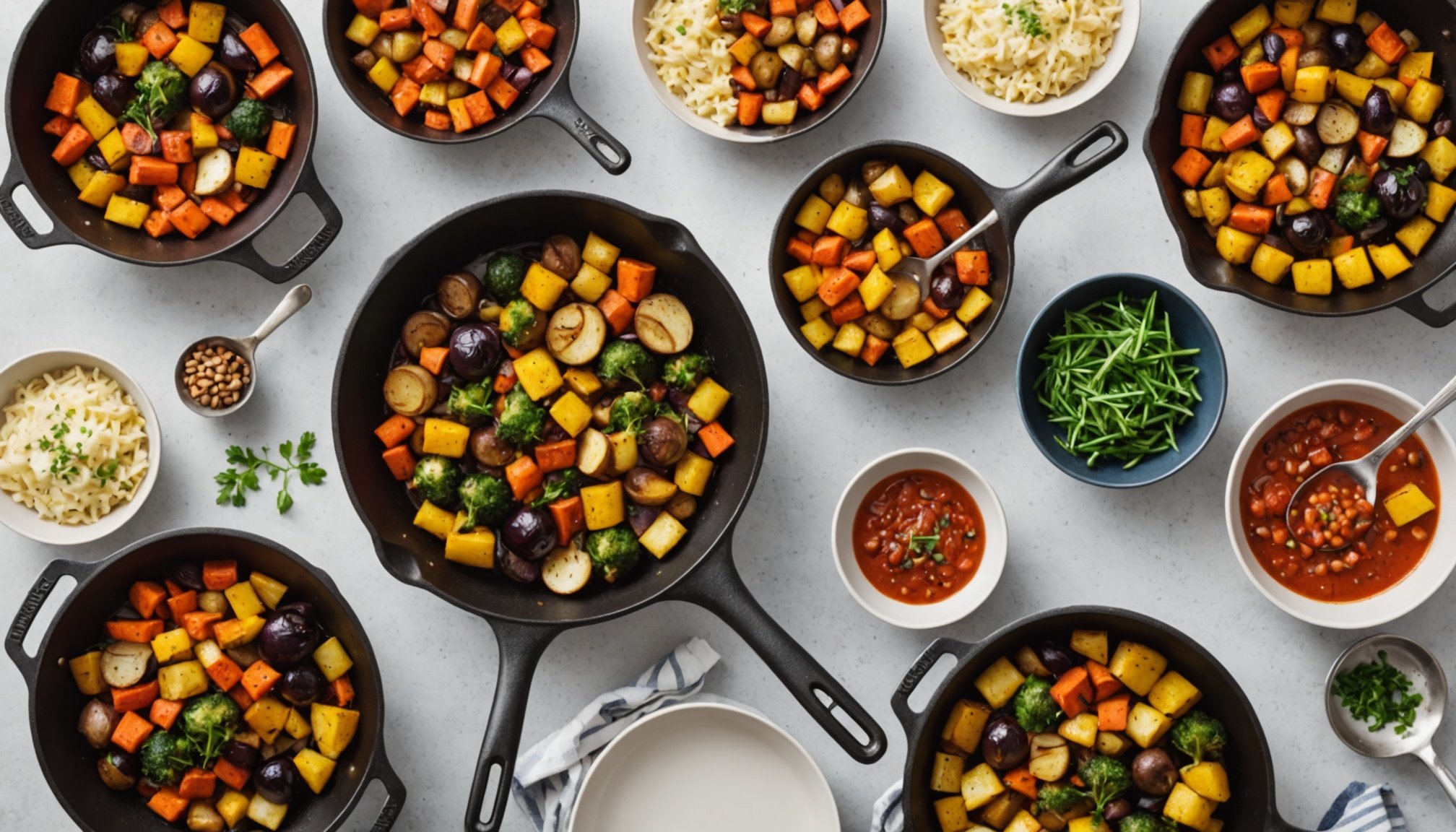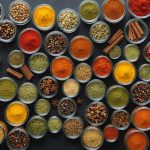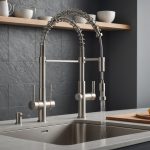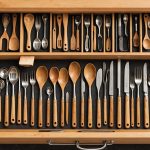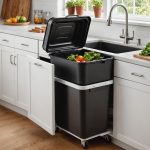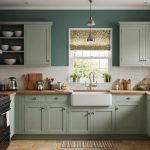The Ultimate Guide to Selecting Ideal Cookware for Delicious Roasted Vegetables
When it comes to roasting vegetables, the right cookware can make all the difference between a dish that’s merely good and one that’s truly exceptional. Here’s a comprehensive guide to help you choose the best cookware for roasting vegetables, ensuring your veggies turn out crispy, flavorful, and perfectly cooked every time.
Understanding the Basics of Roasting Vegetables
Before we dive into the cookware, it’s essential to understand the fundamentals of roasting vegetables. Roasting involves cooking vegetables in the oven at a high temperature, typically between 400°F to 425°F, to bring out their natural sweetness and achieve a crispy exterior.
This might interest you : Round or square waffle makers: find your ideal kitchen companion!
Key Tips for Roasting Vegetables
- Use High Heat: Roasting at high temperatures helps in achieving that perfect caramelization and crispiness[1][3][5].
- Don’t Crowd the Pan: Ensure the vegetables are spread out in a single layer to allow for even cooking and browning[1][3][5].
- Use Enough Oil: Generous coating with olive oil or avocado oil is crucial for caramelization and to prevent drying out[1][3][5].
- Rotate the Pan: Halfway through the cooking time, rotate the pan to ensure even browning and cooking[1][3][5].
Choosing the Right Baking Sheet
The baking sheet is the heart of your roasting operation. Here are some key factors to consider when selecting the best baking sheet for your roasted vegetables.
Materials: What Works Best?
- Stainless Steel: Known for its durability and non-reactive properties, stainless steel baking sheets are excellent for roasting. The Hestan Provisions OvenBond Tri-ply 3-Piece Set is a great example, offering tri-ply construction for even heat distribution and ease of cleaning[2].
- Aluminized Steel: This material is another favorite due to its excellent heat conductivity. The Caraway Large Baking Sheet and the Great Jones Holy Sheet Pan are top choices, with their aluminized steel and non-stick coatings[2].
- Cast Iron: While cast iron pans are fantastic for many cooking tasks, they are not the best choice for roasting vegetables due to their heavy weight and the need for preheating.
Size and Shape
- Half-Sheet Pans: These are the most versatile and commonly used sizes for roasting vegetables. They offer ample space without being too large to handle[2][3][5].
- Non-Stick Coating: A non-stick coating can make cleaning a breeze and prevent vegetables from sticking. However, ensure the coating is durable and can withstand high oven temperatures[2].
Additional Features to Consider
- Handles: Look for baking sheets with sturdy, easy-to-grip handles. This makes it safer to handle the pan when it’s hot, such as the Caraway Large Baking Sheet[2].
- Dishwasher Safe: While not a necessity, a dishwasher-safe baking sheet can be a significant convenience. The Hestan Provisions OvenBond Tri-ply 3-Piece Set is a great option here[2].
Detailed Comparison of Top Baking Sheets
Here’s a comparison table to help you make an informed decision:
Have you seen this : Unleashing the Advantages: Why Choose a Serrated Bread Knife Instead of a Straight Blade?
| Baking Sheet | Material | Size | Non-Stick Coating | Dishwasher Safe | Special Features |
|---|---|---|---|---|---|
| Caraway Large Baking Sheet | Aluminized Steel | 18 x 13 inches | Yes, ceramic coating | No | Sturdy handles, easy to clean[2] |
| Hestan Provisions OvenBond Tri-ply 3-Piece Set | Stainless Steel | 18 x 13 inches (half sheet), 9 x 12 inches (quarter sheet) | No | Yes | Tri-ply construction, includes rack and smaller pan[2] |
| Great Jones Holy Sheet Pan | Aluminized Steel, ceramic coating | 18.5 x 13.5 inches | Yes | No | Vibrant colors, easy to clean[2] |
Practical Tips for Using Your Baking Sheet
Once you’ve chosen the perfect baking sheet, here are some practical tips to ensure your roasted vegetables turn out perfectly.
Preparing Your Vegetables
- Wash and Dry: Make sure to wash your vegetables thoroughly and pat them dry to remove excess moisture[1][3][5].
- Cut Uniformly: Cut the vegetables into uniform pieces to ensure even cooking[1][3][5].
- Season Generously: Use olive oil, salt, pepper, and any other seasonings you like. Toss the vegetables to coat them evenly[1][3][5].
Roasting Techniques
- High Heat: Preheat your oven to 425°F. For convection ovens, reduce the temperature to 375°F[1][3][5].
- Single Layer: Spread the vegetables out in a single layer on the baking sheet. If necessary, use multiple sheets to avoid crowding[1][3][5].
- Flip and Rotate: Flip the vegetables halfway through the cooking time and rotate the pan to ensure even browning[1][3][5].
Additional Tools and Accessories
While a good baking sheet is essential, other tools can enhance your roasting experience.
Cutting Boards and Knives
- Extra-Large Cutting Board: An extra-large cutting board provides ample space for chopping multiple vegetables at once[5].
- Sharp Chef’s Knife: A high-quality, sharp chef’s knife makes prep work much easier and safer[5].
Oven Racks and Positions
- Position Racks: Position the oven racks in the upper and lower thirds of the oven if using two sheets. This ensures even cooking and browning[5].
- Direct Heat: For an extra crispy bottom, consider placing the baking sheet directly on the bottom of the oven, but ensure it’s not touching the oven floor to avoid damage[3].
Frequently Asked Questions
Here are some common questions and answers to help you troubleshoot and optimize your roasting process.
What Temperature is Best for Roasting Vegetables?
- The best temperature for roasting vegetables is typically between 400°F to 425°F. For convection ovens, reduce the temperature to 375°F[1][3][5].
Why Are My Roasted Vegetables Soggy?
- Soggy vegetables are often a result of overcrowding the pan, which causes them to steam instead of roast. Ensure the vegetables are spread out in a single layer and use multiple sheets if necessary[1][3][5].
Do I Need to Cover Roasted Vegetables in the Oven?
- No, covering the vegetables can trap moisture and prevent them from roasting properly. Instead, let them cook uncovered to achieve that perfect crispiness[5].
Choosing the right cookware for roasting vegetables is a crucial step in achieving that perfect dish. By understanding the materials, sizes, and features of baking sheets, and following practical tips for preparation and roasting, you can ensure your vegetables come out deliciously roasted every time.
Final Tips and Recommendations
- Experiment with Different Vegetables: Don’t be afraid to try various vegetables like Brussels sprouts, sweet potatoes, and root vegetables. Each has its unique flavor and texture when roasted[5].
- Season Creatively: Use a variety of seasonings like Italian seasoning, garlic powder, and Parmesan cheese to add depth to your roasted vegetables[5].
- Make it a Habit: Roasting vegetables can be a weekly routine. Prep your veggies in advance and roast them in bulk to have a ready supply throughout the week[5].
By following these guidelines and tips, you’ll be well on your way to becoming a master of roasted vegetables, and your meals will never be the same again. Happy roasting

